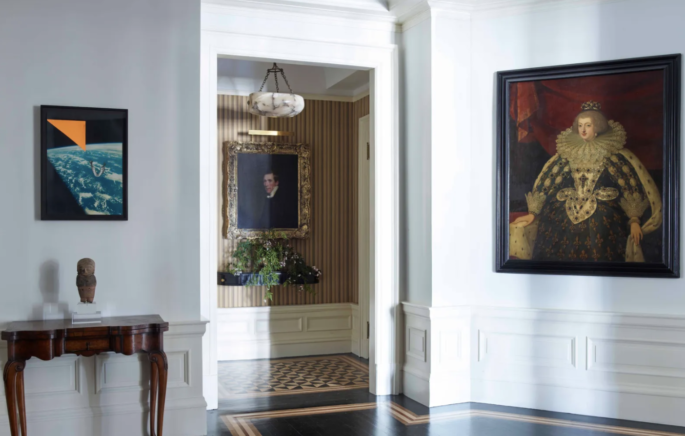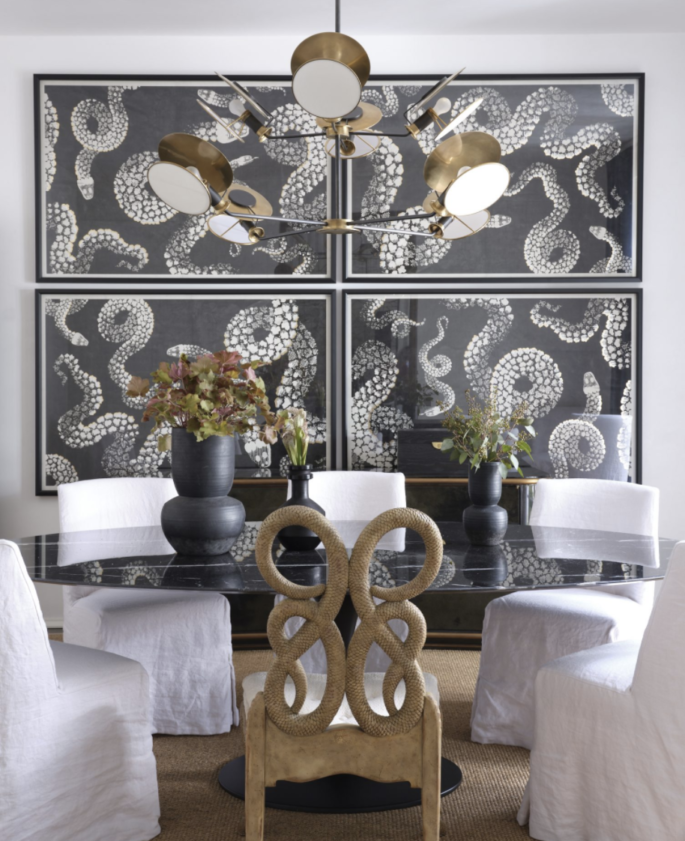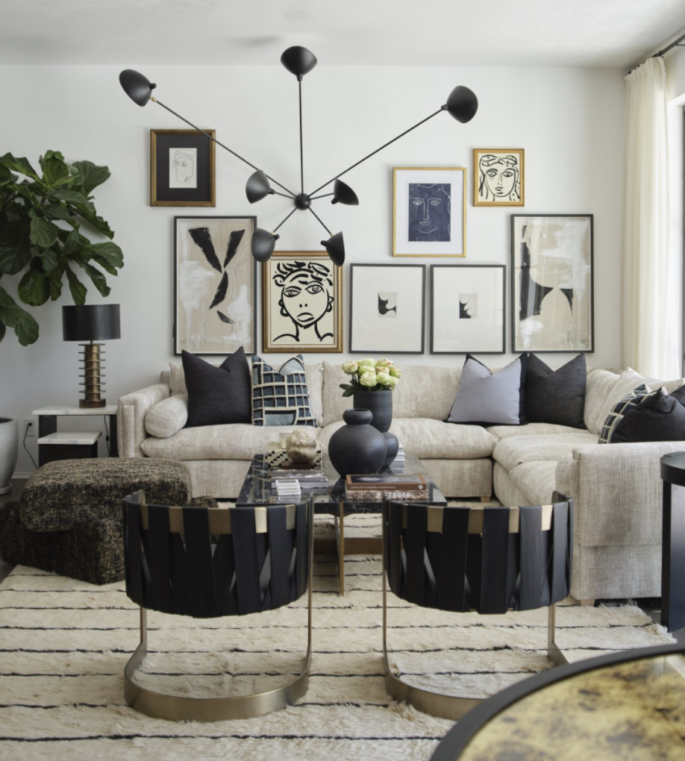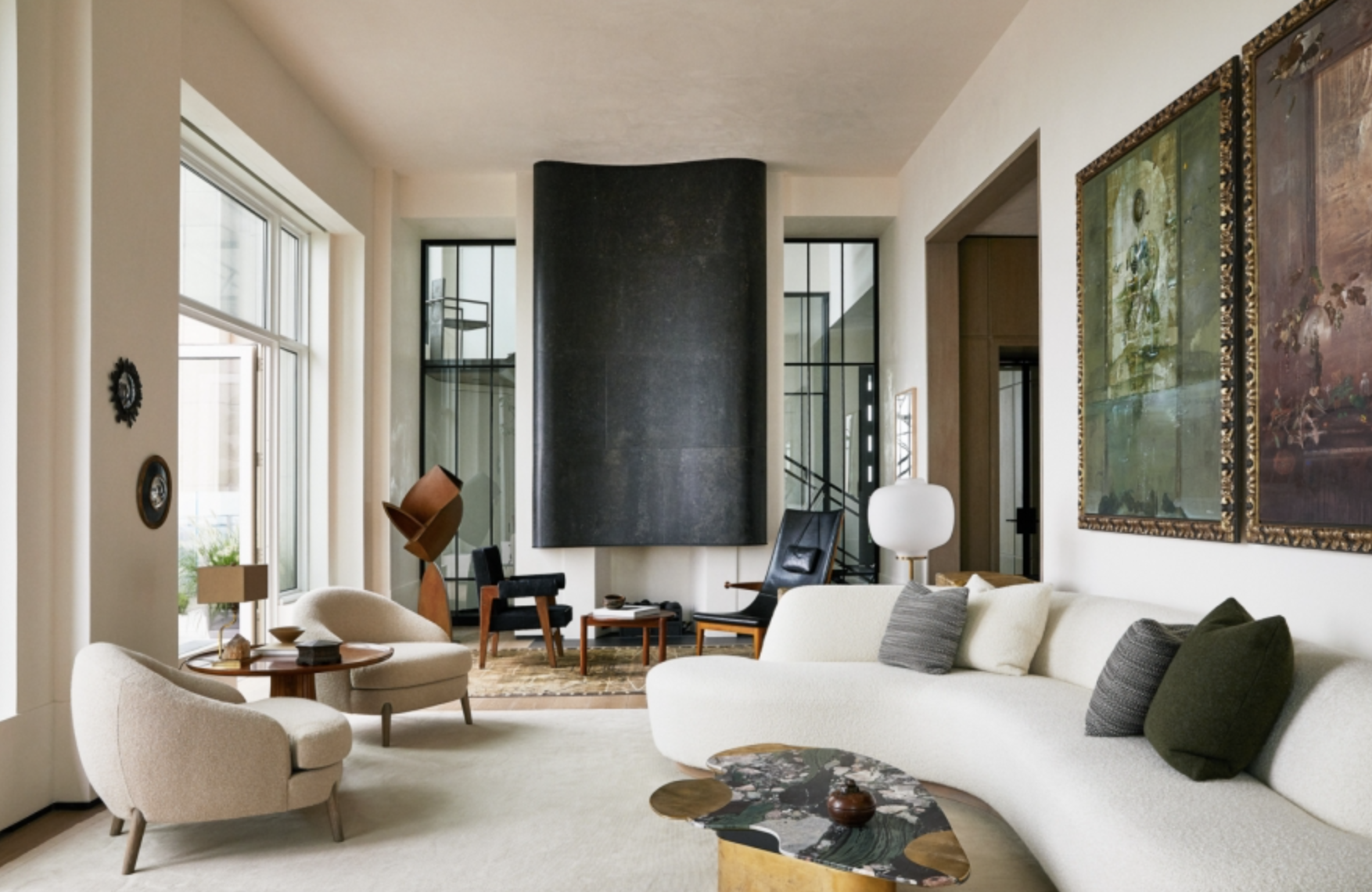Nothing against vases, rugs, or lamps, but there’s nothing quite like pulling a room together with the perfect piece of art. Even the most DIY-challenged can manage the basic hook, nail and wire combo that costs less than a latte. But art placement presents a bigger challenge—how to best show your collection. Read more, ‘How To Start An Art Collection.’
You want your walls to invite reflection, not vertigo.
Ninety-nine percent of people can physically hang art, but that doesn’t mean they know how to hang it properly. A local frame shop or gallery will recommend an expert with a good eye. Or Google “professional picture hangers. They typically charge $120 and up per hour. But in case you want to be the one with the hammer, here’s some expert advice.

In Will Kopelman’s New York apartment, his eclectic taste in art is shown in the foyer. A collage by Sterling Ruby (left), portrait by Henry Raeburn, Old Master portrait of Anne of Austria. Photo: Simon Upton for ArchitecturalDigest.com
Don’t Look Up.
You wouldn’t position your television so high that viewing it felt like watching from a hospital bed. But the most common error homeowners make is placing the middle of their images above the line of sight. Art should be hung roughly at eye level. In a room with standard 3.5 metre ceilings, populated by neither Lilliputians nor giants, the sweet spot is 150cms from the floor to the centre of the artwork. That middle line should be consistent throughout the room. The tops and bottoms of your paintings may not line up, but their waistlines will. Use a pencil to mark a point 58cm up from the floor. Read more ‘Can You Design A Happy Home? It’s Easier Than It Looks.’
For pieces hung above furniture, the bottom of the frame should be 8 to 10 inches above the top of the furniture.
Measure your frame.
Measure the height of your frame. Mark that point. An anchor is useful for frames that are nine kilograms or more. To use one, find the wall stud and drill a screw directly into that spot. If the stud is not in a good location, use a drywall or Molly anchor to hang directly from the wall. For very heavy frames, use a butterfly anchor. Read more, ‘How To Display Your Collections.’
Adjust the Hardware.
Measure the distance from your hanging hardware to the top of the frame. (Pull taut any wires.) If the distance is, say, 2 inches, subtract 2 inches from the point you’ve marked for the top of your frame. This is where the nail goes. Mark this point on the wall.
‘You want your walls to invite reflection, not vertigo.’

Talk about getting the scale right with these snake motifs, which are cleverly repeated in an accent chair in designer, Melanie Turner’s, Atlanta home. Photo: Mali Azima for 1stdibs.com
Consciously Cluster.
To avoid the cacophony that a slew of small, unrelated pictures—especially family photos—can create, tell a story. Perhaps school photos can go in one section and holiday photos in another. Other groupable themes: paintings of the same era or genre, like portraits of pets. Read more, ‘Affordable Art Exists – Here’s Where To Shop For It Online.’
A wall of framed pieces can appear flat. Add elements of 3-D interest such as a collection of turtle shells will add texture.
In these groupings, the centreline of the middle picture or object should be at eye level.
Make Strangers Feel at Home.
Never worry that a piece of art you’ve fallen in love with will be the orphan child of a design scheme. Make it work by finding a commonality between the artwork and your décor, “the way a traditional chandelier against a contemporary table can be fantastic with linked elements. A vintage painting in a gilded rococo frame in an otherwise contemporary space. Bring in an 18th-century bergère-style chair and upholster it with modern fabric.
Watch the Scale.
You want art to visually relate to the other furnishings in the room. This is where scale comes in. If when you place a small painting at eye level, for example, it looks like it’s floating away from the sofa beneath it, the space needs a bigger piece. At the same time, that larger art should be high enough that no one knocks it with their head.
A diminutive piece on an otherwise bare wall will go unadmired. Your intentions may be good, but no one will notice it. Be purposeful when finding a spot for a small work. Hang it off-centre, over the end table rather than the sofa, or in an unexpected spot where it will draw attention.
A trick of the trade? Put a smaller piece between two larger ones.

Consciously cluttering at its finest with abstract portraits hung in Melanie Turner’s living room, creating a bold, exuberant space. Photo: Mali Azima for 1stdibs.com


